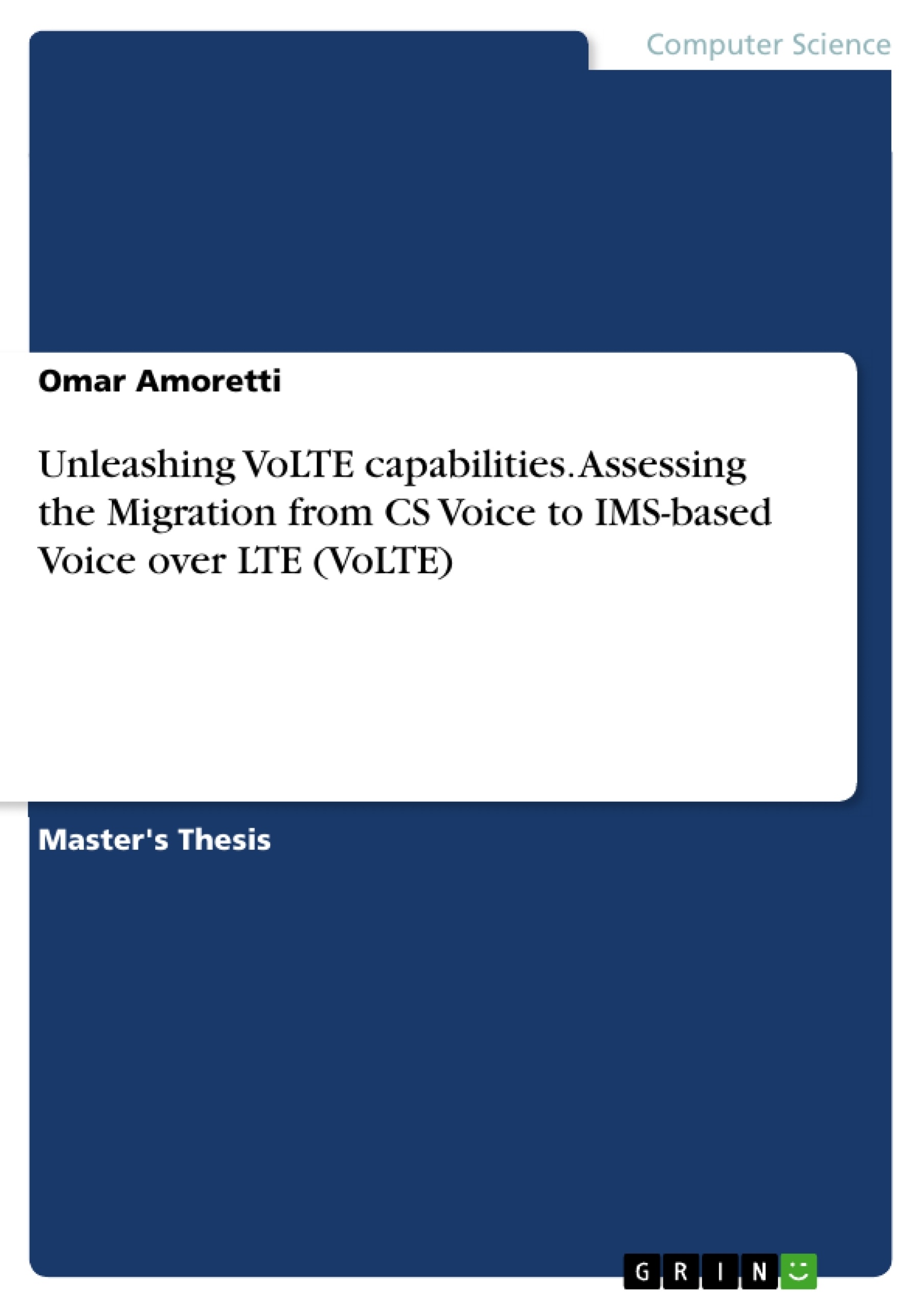Operator-provided voice services will gradually migrate from today’s circuit-switched (CS) voice networks to packet-switched IP networks, using Voice over LTE (VoLTE) as the foundation to provide telecom-grade telephony services. In fact, the capability of transporting Voice over IP (VoIP) services along with the provision of high-rate data throughputs, characterizes one of the critical drivers for the LTE development.
This thesis presents the first implications of introducing IMS-based VoLTE in Germany, Austria and Switzerland (DACH) from a mobile operator’s perspective. Further VoLTE performance aspects such as parameter optimization and HD voice are discussed, thus serving as a basis to then analyze the DACH mobile network test results for 2014 in terms of telephony and data performance. Overall results for a DACH VoLTE trial conducted in the third quarter 2014 complement the analysis.
Table of Contents
- Introduction
- Migrating to IMS-based VOLTE: Initial considerations
- Benefits of IMS-based VoLTE
- Providing voice over LTE
- Circuit-switched Fallback (CSFB)
- Voice over LTE (VOLTE)
- VOLTE Logical Architecture
- VOLTE Functional Node Description
- 4G LTE network architecture
- Assessing the Voice Quality Performance
- Leveraging the Operators' Assets
- Development of audio testing
- PESQ/POLQA methodology
- VOLTE Parameter Optimization
- Robust Header Compression (RoHC)
- Transmission Time Interval (TTI) Bundling
- Discontinuous Reception (DRX)
- Dedicated Bearers
- Semi-Persistent Scheduling (SPS)
- VOLTE Testing
- Primary Implications
- Voice Quality of VOLTE versus OTT Voice Services
- Mobile Network Test: Testing Framework
- Mobile Network Test 2014: Connect Magazine
- Organizational aspects
- Test methodology
- Germany: Telephony Test Results
- Germany: Data Test Results
- Austria: Telephony Test Results
- Austria: Data Test Results
- Switzerland: Telephony Test Results
- Switzerland: Data Test Results
- Mobile Network Test: Overall Results DACH Region
- Austria: VoLTE Friendly User Tests
- Mobile Network Test 2014: CHIP Magazine
- Test methodology
- Germany: Telephony Test Results
- Germany: Data Test Results
- Primary Implications
Objectives and Key Themes
This master's thesis examines the migration of operator-provided voice services from circuit-switched (CS) networks to packet-switched IP networks using Voice over LTE (VOLTE) technology. The study focuses on the implementation of IMS-based VOLTE in Germany, Austria, and Switzerland (DACH), analyzing its implications from a mobile operator's perspective.
- Assessing the benefits and challenges of migrating to IMS-based VOLTE
- Analyzing the performance of VOLTE in terms of voice quality and data throughput
- Evaluating the impact of VOLTE on mobile network architecture and user experience
- Exploring the optimization of VOLTE parameters for enhanced performance
- Comparing the voice quality of VOLTE with over-the-top (OTT) voice services
Chapter Summaries
- Introduction: This chapter introduces the concept of VOLTE as a key component for all-IP networks, highlighting the increasing gap between capacity and demand in mobile networks. It discusses the importance of VOLTE for delivering voice and data services concurrently, outlining the global adoption of this technology.
- Migrating to IMS-based VOLTE: Initial considerations: This chapter delves into the benefits of IMS-based VOLTE, comparing it with circuit-switched fallback (CSFB). It explores the VOLTE logical architecture, including its functional nodes, and discusses the 4G LTE network architecture in relation to VOLTE deployment.
- Assessing the Voice Quality Performance: This chapter examines the voice quality of VOLTE, focusing on methods for testing and measuring its performance. It explores the use of PESQ/POLQA methodologies for assessing audio quality and discusses the importance of leveraging operators' assets for test development.
- VOLTE Parameter Optimization: This chapter investigates the optimization of various VOLTE parameters, including Robust Header Compression (RoHC), Transmission Time Interval (TTI) Bundling, Discontinuous Reception (DRX), Dedicated Bearers, and Semi-Persistent Scheduling (SPS). It discusses the impact of these parameters on VOLTE performance.
- VOLTE Testing: This chapter presents the results of VOLTE testing conducted in the DACH region, focusing on the voice quality of VOLTE compared to OTT voice services. It analyzes the testing framework used for the mobile network tests and discusses the results for telephony and data performance in Germany, Austria, and Switzerland.
Keywords
This master's thesis focuses on the key concepts of **VoLTE**, **IMS-based VoLTE**, **HD voice**, **mobile network architecture**, **telephony performance**, **data performance**, and **parameter optimization**. It analyzes the implications of deploying VOLTE in the DACH region, exploring the transition from circuit-switched to packet-switched voice services and the impact on user experience.
- Arbeit zitieren
- MSc. Omar Amoretti (Autor:in), 2016, Unleashing VoLTE capabilities. Assessing the Migration from CS Voice to IMS-based Voice over LTE (VoLTE), München, GRIN Verlag, https://www.grin.com/document/322492



